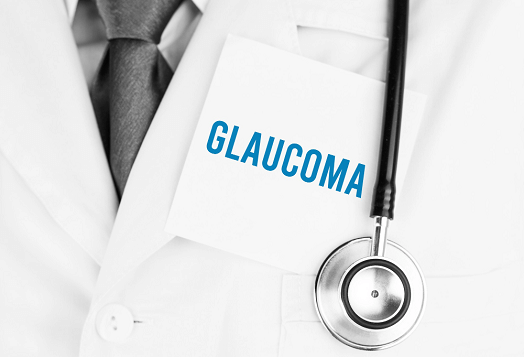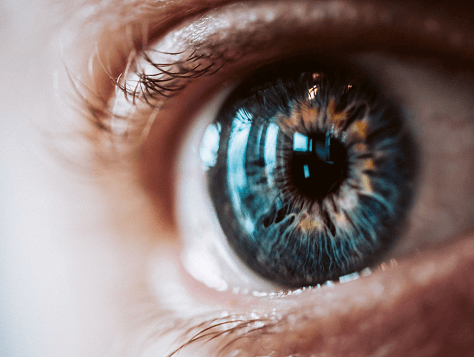PERSONAL BLOG
Glaucoma Overview
GLAUCOMA
Glaucoma is a progressive optic neuropathy leading to a characteristic appearance of the optic disc and specific irreversible visual field defects. It's mostly associated, but not invariably, with raised intraocular pressure (IOP). 👀

RISK FACTORS
- Family History 👨👩👧👧
- Age - people >40yrs are more at risk compared to other people 🧓
- Vasospasm of retinal vessels 👁️
- Systemic hypotension 👨⚕️
TYPES 📋
1) Primary Developmental/ Congenital Glaucoma
- This results from a developmental anomaly of the angle of the anterior chamber not associated with any other ocular anomaly.
- It's divided into newborn, infantile and juvenile.
Clinical Features 👩⚕️
- Lacrimation
- Photophobia - blepharospasm
- Corneal oedema
- Corneal enlargement - Descemet's breaks
- Sclera appears blue
- Deep anterior chamber
Treatment 💊
- Carbonic anhydrase inhibitors e.g. Acetazolamide
- Beta blockers - Timolol
- Surgery - goniotomy, trabeculectomy
2) Developmental Glaucoma with Associated Ocular Anomalies e.g. aniridia, congenital ectropion uvea, congenital micro cornea.
3) Developmental Glaucoma with Associated Systemic or Chromosomal Anomaly e.g. Turner's syndrome, Down syndrome, Edward syndrome.
4) Primary Open Angle Glaucoma (POAG) - here there's a slow but progressive increase in IOP and a characteristic optic disc atrophy.
Risk Factors ⚠️
- Family History
- High IOP
- Age
- Race (common and severe in African and Afro Caribbean populations)
- Myopia
- Diabetes
- Smoking
- High blood pressure
Clinical Features 👨⚕️
- Headache
- Eye ache
- Difficulty in reading close work
- Loss of vision and blindness can occur in late stages.
Diagnosis 🏥
- Tonometry
- Gonioscopy
- Slit lamp examination
- Central corneal thickness (CCT)
Treatment 💊
- Prostaglandin analogue - increases uveoscleral outflow of aqueous humour. It's the first line for POAG e.g latanoprost
- Topical Beta blockers - lowers IOP by reducing aqueous secretion e.g. timolol, betaxolol
- Adrenergic drugs - increases aqueous outflow e.g. epinephrine, brimonidine
- Carbonic anhydrase inhibitors - inhibits aqueous humour production by altering ion transport at the ciliary epithelium
- Surgical treatment - Trabeculectomy

5) Primary Angle-Closure Glaucoma - apposition of peripheral iris against the trabecular meshwork leading to obstruction of aqueous outflow by closure of an already narrow-angle of the anterior chamber.
Clinical Features 👩⚕️
- Conjunctival hyperemia
- Severe pain
- Tearing
- Photophobia
- Conjunctival oedema
Treatment 💉
- Immediate medical therapy to reduce IOP
- IV mannitol 1g/kg, oral hyperosmotic e.g. glycerol 1g/kg, systemic carbonic anhydrase inhibitors e.g. acetazolamide 500mg IV stat followed by 250mg three times daily, topical antiglaucoma e.g. brimonidine, beta blocker etc
- Pilocarpine is started after 1 hour of commencement of treatment i.e. when IOP is lowered, as at higher IOP, sphincter is ischaemic and unresponsive to pilocarpine.
- Analgesics and anti emetics
- Topical steroids to reduce inflammation
6) SECONDARY GLAUCOMA - lens induced/phacomorphic e.g swollen lens, displaced
- Neurovascular glaucoma e.g. caused by diabetes, hypertension
- Glaucoma secondary to intraocular haemorrhage
- Steroid - induced glaucoma
- Traumatic glaucoma
- Glaucoma associated with intraocular tumours

OTHER RELATED TERMS IN GLAUCOMA 🗨️
- Ocular hypertension - IOP >21 mmHg but no optic disc and visual field changes.
- Glaucoma suspect - adult with normal open-angle glaucoma but on gonioscopy, there's a consistent increase of IOP >21mmhg, a suspicious disc and degenerative notching of the disc.
- Normal tension glaucoma - typical glaucomatous changes with an IOP constantly below 21 mmHg. Pathogenesis - Raynaud's phenomenon, migraine, systemic hypertension, nocturnal/systemic hypotension.
By Naruto
I-Medics Ambassador
Related Articles
Everything you need to know about Glaucoma in 60 seconds!














